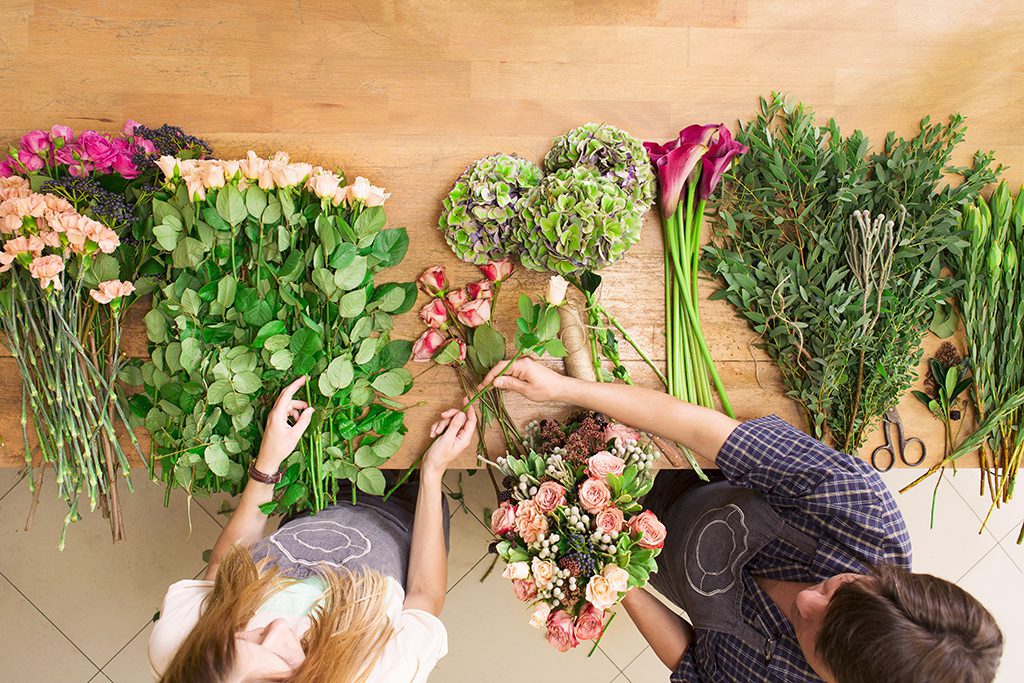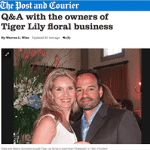
Calculating the cost of an arrangement using an Excel spreadsheet is but one way to ensure profitable designs. Tim Farrell, AAF, AIFD, PFCI, shares several other tips for creating and selling arrangements that are sure to turn a profit.
Floral arranging is both an art and a science. Arrangements must not only look beautiful, but they must also be profitable. Does your shop strike the balance?
At the Society of American Florists’ 1-Day Profit Blast last month in Albany, New York, Tim Farrell, AAF, AIFD, PFCI, offered tips to ensure profitability on trendy designs — tips that are especially helpful as Mother’s Day approaches May 8.
“We do not just drop flowers in vases,” said Farrell, of Farrell’s Florist in Drexel Hill, Pennsylvania. “There is an art to what we do, and there’s a science behind it. When we do it well, and when we’re excited about it … we can create some beautiful things, and not only make ourselves happy, but our customers happy in the meantime.”
Stick to a Budget
Farrell, who consults with other retailers, estimates that many flower shops lose money on arrangements priced between $50 and $150. Shops know how to stay profitable on budget bouquets and high-end arrangements, he said, but designing for the mid-range can be a difficult balance to strike. Instead of pitting cost against design, Farrell suggests embracing the constraints.
Farrell has his designers calculate the cost of an arrangement using an Excel spreadsheet. They input the costs of the arrangement, including labor and fresh and hard goods. If the total cost is more than $1 above or below the price point, Farrell asks his designers to add or remove stems until they hit the target.
Use of the Excel sheet ensures that every arrangement is profitable and that customers have a similar experience no matter who designs the arrangement. “ takes designers a few extra minutes, but they quickly get used to it,” Farrell said. One way to hold designers accountable is to incentivize them with bonuses for hitting budgets on all arrangements for a set period of time.
Deploy Marketing Tactics
If you want to sell a $200 arrangement, put a $300 arrangement in the cooler, Farrell said. You might not sell that $300 arrangement, but you’ll sell more in the $200 range, he said.
That advice may sound contradictory, but it’s a proven marketing tactic that appeals to human logic and reasoning. Consumers don’t want the least expensive choice, but they don’t want the most expensive option, either; they want to be somewhere in the middle, Farrell said. In order to get someone to buy the highest priced item in your shop, create something even more expensive.
“Set the bar higher and higher and higher,” Farrell said.
That strategy can also create a sense of prestige among discerning customers. Backing up those dollar signs with strong language that uses the principles of design adds value and might net a bigger sale.
Talk Pricing Last
Make your expert recommendations based on the information the customer provides: occasion, name recognition, delivery ZIP code. Then talk budget. For example, an arrangement for someone’s 50th anniversary is not a $50 arrangement.
“The pricing is the last bit of information I talk about,” Farrell said. “I want to know who’s buying it, who it’s going to, what the card message is and what the delivery date is.”
Sell the customer on an arrangement using strong descriptors; they are more willing to spend more if you sound confident and knowledgeable, Farrell said.
When initiating the discussion about pricing, start by offering the customer price points such as $50, $100 or $150. Farrell points out that a $100 and a $125 basket likely look about the same, and having a bigger range between price points gives designers greater freedom to create striking designs — within budget.
Use Designs as Advertising
Your product is the best way to brand yourself and advertise your business, Farrell said.
While it’s important to have design recipes to control costs and offer consistency, it is also important to mix up your offerings and create arrangements that elicit a reaction of “Where’d you get that?”
“Don’t always put the same thing out there,” Farrell said. “It really does your designer soul a lot of good to be able to make something different. I’m telling you, this is the best advertising you can ever do for yourself. Put your talent and your product out there.
“We import flowers all over the world, and we get them in every day. Make that your message that’s out there. Our designers — even if you’re the only one making everything — are trained to make something beautiful and artistic that may not be seen in other places. You can carve that niche out for yourself immediately and then market yourself in your community to be the florist for people to go to.”
Many places may sell flowers, but not everybody can design a striking arrangement, Farrell said. Look at what other florists are doing and, more importantly, what they aren’t. That will help you find opportunities — and long-term success.
Looking for more business advice? Farrell and several other floral professionals will share their knowledge at SAF’s 1-Day Profit Blast in Cedar Rapids, Iowa on June 7.
Nicole Stempak is a contributing writer for the Society of American Florists.



